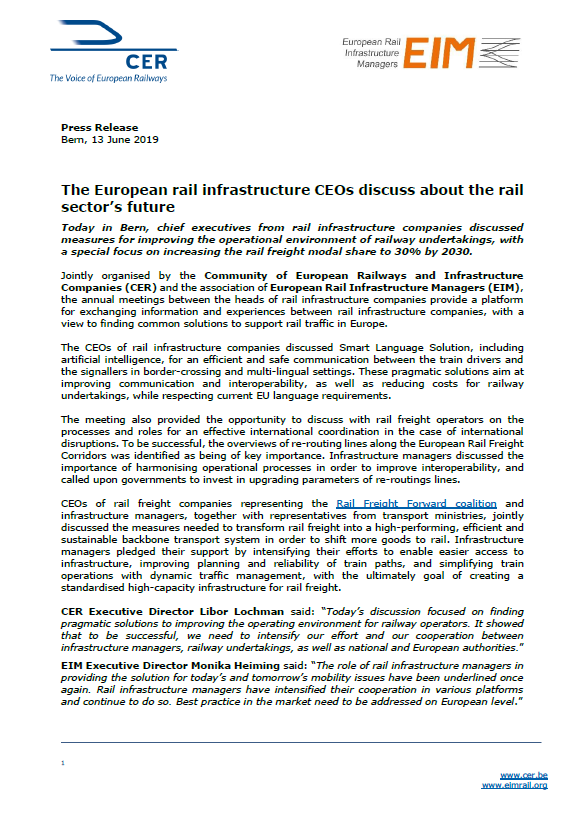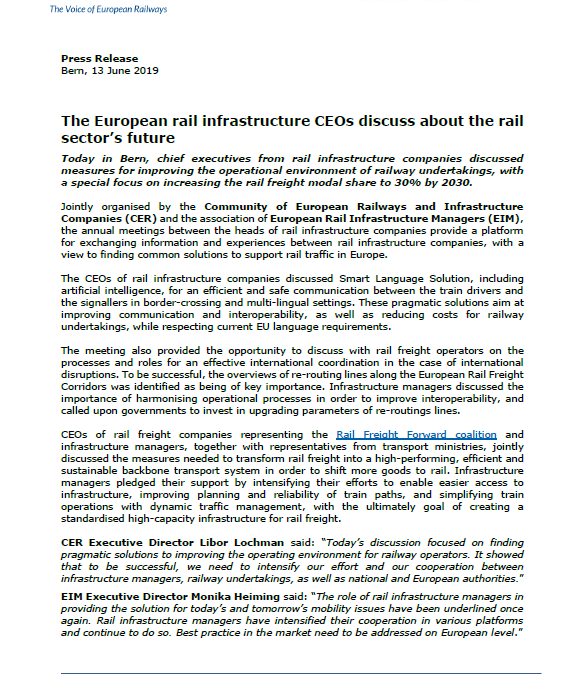Press Releases
Today in Bern, chief executives from rail infrastructure companies discussed measures for improving the operational environment of railway undertakings, with a special focus on increasing the rail freight modal share to 30% by 2030.
Jointly organised by the Community of European Railways and Infrastructure Companies (CER) and the association of European Rail Infrastructure Managers (EIM), the annual meetings between the heads of rail infrastructure companies provide a platform for exchanging information and experiences between rail infrastructure companies, with a view to finding common solutions to support rail traffic in Europe.
The CEOs of rail infrastructure companies discussed Smart Language Solution, including artificial intelligence, for an efficient and safe communication between the train drivers and the signallers in border-crossing and multi-lingual settings. These pragmatic solutions aim at improving communication and interoperability, as well as reducing costs for railway undertakings, while respecting current EU language requirements.
The meeting also provided the opportunity to discuss with rail freight operators on the processes and roles for an effective international coordination in the case of international disruptions. To be successful, the overviews of re-routing lines along the European Rail Freight Corridors was identified as being of key importance. Infrastructure managers discussed the importance of harmonising operational processes in order to improve interoperability, and called upon governments to invest in upgrading parameters of re-routings lines.
CEOs of rail freight companies representing the Rail Freight Forward coalition and infrastructure managers, together with representatives from transport ministries, jointly discussed the measures needed to transform rail freight into a high-performing, efficient and sustainable backbone transport system in order to shift more goods to rail. Infrastructure managers pledged their support by intensifying their efforts to enable easier access to infrastructure, improving planning and reliability of train paths, and simplifying train operations with dynamic traffic management, with the ultimately goal of creating a standardised high-capacity infrastructure for rail freight.
CER Executive Director Libor Lochman said: “Today’s discussion focused on finding pragmatic solutions to improving the operating environment for railway operators. It showed that to be successful, we need to intensify our effort and our cooperation between infrastructure managers, railway undertakings, as well as national and European authorities.“
EIM Executive Director Monika Heiming said: “The role of rail infrastructure managers in providing the solution for today’s and tomorrow’s mobility issues have been underlined once again. Rail infrastructure managers have intensified their cooperation in various platforms and continue to do so. Best practice in the market need to be addressed on European level.”



